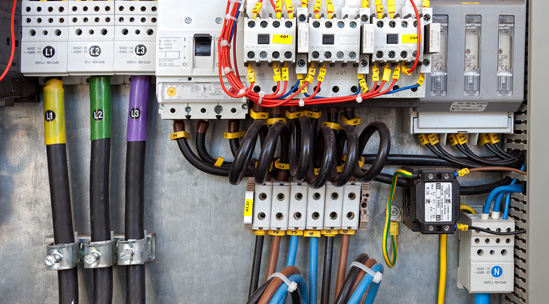In the realm of electrical contracting, innovation is the cornerstone of progress. As technology evolves, so do the tools and methods used by electrical contractors to meet the demands of modern construction projects. One such innovation that has revolutionized the industry is the utilization of self-regulating heating cables. These cables, with their ability to adjust their heat output based on surrounding temperatures, offer a versatile solution for a wide range of applications, from frost protection to process temperature maintenance. In this article, we delve into the world of electrical contracting and explore the role of self-regulating heating cables in shaping the future of construction and infrastructure development.
Understanding Self-Regulating Heating Cables
Self-regulating heating cables are engineered with a special conductive core that adjusts its heat output in response to variations in ambient temperature. Unlike traditional heating cables, which operate at a constant power output, self-regulating cables automatically modulate their heat output along the entire length of the cable. This dynamic self-regulation not only enhances energy efficiency but also ensures precise temperature control, making them ideal for a wide range of applications.
Applications in Construction and Infrastructure
Frost Protection: In regions prone to freezing temperatures, self-regulating heating cables are commonly used to prevent pipes, roofs, and gutters from freezing and causing costly damage. By installing these cables along vulnerable areas, electrical contractors in dubai can provide reliable frost protection without the need for complex control systems.
Snow Melting: Self-regulating heating cables are also employed for snow melting applications, particularly in driveways, walkways, and outdoor staircases. By embedding these cables in concrete or asphalt surfaces, contractors can create safe, snow-free environments without the use of chemical de-icers or manual snow removal.
Process Temperature Maintenance: In industrial settings where maintaining precise temperatures is critical, self-regulating heating cables play a vital role in ensuring operational efficiency and product quality. These cables are used to heat tanks, vessels, and pipelines, providing consistent temperature maintenance for various manufacturing processes.
Benefits for Electrical Contractors
Versatility: One of the key advantages of self-regulating heating cables is their versatility. Whether it’s protecting infrastructure from freezing temperatures or maintaining precise temperatures in industrial processes, these cables offer a flexible solution that meets the diverse needs of electrical contractors and their clients.
Ease of Installation: Compared to traditional heating systems, self-regulating heating cables are relatively easy to install. With their flexible design and simple termination methods, contractors can efficiently deploy these cables in various configurations, minimizing installation time and labor costs.
Energy Efficiency: Self-regulating heating cables are inherently energy-efficient, thanks to their dynamic heat output modulation. By adjusting their power consumption based on ambient temperatures, these cables optimize energy usage, resulting in lower operational costs for end-users.
Challenges and Considerations
While self-regulating heating cables offer numerous benefits, there are certain challenges and considerations that electrical contractors must address during installation and maintenance:
Thermal Insulation: Proper thermal insulation is essential to maximize the efficiency of self-regulating heating cables. Without adequate insulation, heat loss can occur, reducing the effectiveness of the system and increasing energy consumption.
System Design: Effective system design is critical to ensure optimal performance and reliability. Electrical contractors must carefully consider factors such as cable spacing, power requirements, and control mechanisms to design systems that meet the specific needs of each application.
Durability and Maintenance: Like any electrical system, self-regulating heating cables require regular maintenance to ensure long-term reliability. Contractors should inspect cables periodically for damage or wear and conduct any necessary repairs or replacements to prevent downtime and ensure continuous operation.
Conclusion
Innovation drives progress in the field of electrical contracting, and self-regulating heating cables represent a prime example of how technology is reshaping the industry. With their dynamic heat output modulation and versatile applications, these cables offer a reliable solution for frost protection, snow melting, and process temperature maintenance. As electrical contractors continue to embrace these advancements, they will play a pivotal role in shaping the future of construction and infrastructure development, delivering efficient and sustainable solutions to meet the evolving needs of society.

